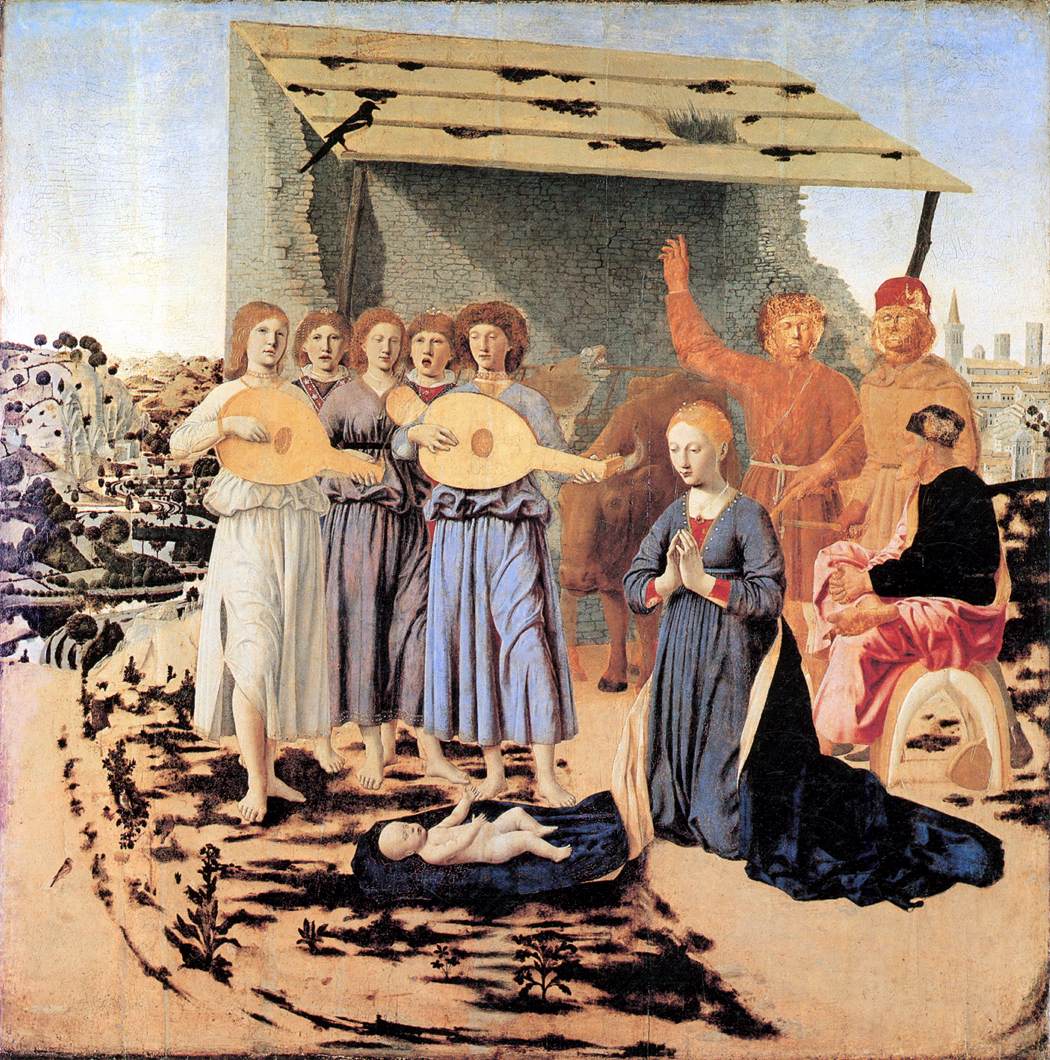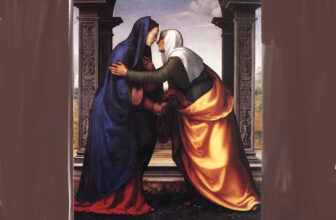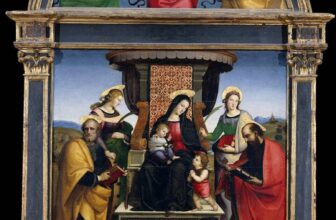
What Is Happening in The Painting
In the quiet glow of the National Gallery in London, a remarkable painting draws in viewers with its serene mystery and radiant clarity. This is The Nativity by Piero della Francesca, a luminous window into the Renaissance mind, faith, and vision. With its soft grace and geometric balance, the painting appears at first glance to be a simple devotional image. But beneath its still surface lies a complex network of symbolism, theology, and painterly innovation , all testaments to one of the most intellectually sophisticated artists of the Italian Renaissance.
Piero della Francesca: Painter of Light and Logic
Before diving into The Nativity itself, it is essential to understand the mind behind the brush. Piero della Francesca (c. 1412–1492) was a painter, mathematician, and theorist , a man whose art was deeply rooted in reason, perspective, and classical ideals. Born in the small Tuscan town of Sansepolcro, he trained in Florence and absorbed the lessons of early Renaissance pioneers like Masaccio and Fra Angelico. Piero, however, went a step further. His work bridges the spiritual and the mathematical, the emotional and the architectural.
Known for masterpieces like The Baptism of Christ, The Flagellation of Christ, and the Legend of the True Cross, Piero’s style is marked by monumental calm, crystalline light, and a profound sense of stillness. His figures seem carved from marble yet are imbued with inner serenity. It is within this context that The Nativity was painted , a late work, completed between 1470 and 1485, and considered by many as Piero’s final painting.
How and Why The Nativity Was Painted
The painting was likely created for personal devotion, possibly for Piero’s own family home in Sansepolcro. Scholars speculate that it may have been commissioned or completed during the last years of his life, when he was losing his sight and perhaps reflecting on his own mortality and faith. Painted in tempera and oil on panel , a technique in transition during the period , it combines the linear clarity of tempera with the subtle tonal modeling of oil paint.
While the exact reason behind its commission is not known, its intimate scale and contemplative mood suggest a work intended for private meditation rather than public display. Piero’s use of soft light, structured composition, and subtle narrative suggests not only technical mastery but a deeply personal engagement with the Nativity story.
At its core, The Nativity depicts the birth of Christ, a scene ubiquitous in Christian art. But Piero’s version is distinctively quiet and rational , far from the dramatic or mystical interpretations seen in other Renaissance works.
In the center, the Virgin Mary kneels in adoration before the infant Christ, who lies on the ground on a pale cloth. This posture , Mary not holding her child, but worshipping him , reflects Franciscan influence and echoes the visions of St. Bridget of Sweden, who wrote that the Virgin knelt in awe before her divine son at his birth.
Behind her, Joseph sits calmly on a low bench. He appears pensive, resting his cheek on his hand , a contemplative figure that may suggest the mystery of the Incarnation, which he cannot fully understand. To the right, five angels sing and play lutes in a semi-circle, their expressions serene, their gestures synchronized, their hair like burnished gold. They represent the celestial rejoicing at Christ’s birth and bring musical harmony to the stillness.
To the left, two shepherds observe the scene with awe. Their rustic clothing and animated gestures stand in contrast to the composed figures of the Holy Family, bridging the sacred and the everyday. One shepherd, pointing with his hand raised, appears to be communicating a realization or message , possibly echoing the words of the angelic announcement.
In the background, Piero includes a ruined stable or classical ruin, a motif popular in Renaissance art that symbolizes the decay of the old pagan world with the birth of Christ , the new spiritual order. A donkey and an ox stand near the manger, traditional symbols of patience and faith, often interpreted as referencing Isaiah 1:3: “The ox knows its owner, and the donkey its master’s crib.”
Far behind, the rolling hills of the Tuscan landscape unfold with luminous clarity. Birds flit in the sky; trees grow with mathematical precision. This setting is both real and symbolic , representing the new Eden restored by Christ’s birth.
Symbolism and Meaning: More Than Meets the Eye
Piero’s Nativity is not just a tranquil religious image , it’s a layered theological statement. Every element speaks to a deeper symbolic or spiritual reality:
1. Mary’s Posture and the Incarnation
The kneeling Mary, hands clasped in adoration, is not maternal in the traditional sense , she is more a worshipper than a mother. This posture emphasizes Christ’s divinity rather than his human infancy. Her deep blue robe, a sign of purity and royalty, anchors the composition both visually and spiritually.
2. The Shepherds: Earthly Witnesses
The shepherds are painted with vivid realism , a hallmark of Piero’s observation of everyday life. Their expressions of wonder and their rustic appearance symbolize the accessibility of the divine. Christ is born not in a palace, but in humble surroundings, witnessed by the poor.
3. Angels in Harmony
The angels’ musical performance suggests the celestial realm made audible. Music, in the Renaissance worldview, was the embodiment of harmony, mathematics, and divine order. Their serene unity contrasts with the variety of human gestures around them, suggesting heavenly perfection.
4. The Ruins and the Stable
The partially ruined structure is deeply symbolic. It may represent the decline of the Roman Empire and its replacement by Christian truth. Such motifs were common in Renaissance Nativity scenes, influenced by early Christian writings and medieval traditions.
5. Animals and Nature
The ox and ass, far from mere decoration, allude to prophetic scriptures. Their presence also underlines the humility and simplicity of the setting. The birds, sky, and hills reflect the harmony between heaven and earth restored through Christ’s birth.
Artistic Techniques and Innovations
Piero was a master of perspective, and The Nativity demonstrates his intellectual rigor. The spatial layout is carefully organized using linear perspective, but the mood remains meditative rather than analytical. Each figure is arranged with mathematical precision, yet the composition feels organic.
He also uses light in a highly sophisticated way. Unlike the dramatic chiaroscuro of Caravaggio or the golden radiance of Byzantine icons, Piero’s light is soft, omnipresent, and natural. It reveals forms gently, with a glow that suggests divine presence rather than theatrical contrast.
His figures are sculptural, idealized, yet individual , embodying Renaissance humanism. They are not dramatic actors but contemplative presences, each lost in private reverie. This quietude is one of Piero’s trademarks, a visual philosophy rooted in calm introspection.
What Kind of Art Is This?
The Nativity is a quintessential example of Renaissance religious art, but it also straddles the realms of devotional painting, narrative art, and scientific representation. It embodies the early High Renaissance‘s interest in balance, harmony, proportion, and human dignity, while retaining the mystical themes of earlier Christian art.
Art historians categorize it as a panel painting, executed in tempera and oil, and representative of the Quattrocento , the 15th-century flowering of Italian painting that preceded the more dramatic developments of the High Renaissance.
Where Is The Nativity Painting Now?
Today, The Nativity resides in the National Gallery, London, where it has been since 1861. It was purchased from the Aldobrandini family in Italy by Alexander Barker and later acquired by the National Gallery. For decades, it was considered damaged or unfinished due to its faded surface and muted colors, but recent scholarship suggests that Piero’s technique , combining tempera with early oil methods , simply aged with unusual delicacy.
Despite some loss in clarity, the painting remains remarkably intact and continues to fascinate scholars and viewers alike with its quiet mystery.
How Much Is The Nativity Painting Worth?
As a priceless cultural artifact, The Nativity by Piero della Francesca is not on the open market and thus lacks a definitive monetary value. However, if hypothetically sold, such a masterpiece could fetch hundreds of millions of dollars, given its historical significance, rarity, and the immense reputation of its artist. Works by Piero are exceedingly rare , only a handful survive , and any authenticated painting by him is considered a national treasure.
The Nativity Legacy and Influence
The Nativity is more than just a beautiful image; it is a summation of Renaissance ideals. It brings together reason and faith, geometry and grace, the human and the divine. Artists from Leonardo da Vinci to Raphael were influenced by Piero’s clarity and use of light. Even in the modern era, figures like Cézanne and Giorgio de Chirico admired his timeless solidity and metaphysical calm.
This painting, quiet and unassuming at first glance, reveals more with every viewing. It invites not just admiration but contemplation , a rare quality in any era.
Piero della Francesca’s Nativity is not just a depiction of an event; it is a theological meditation rendered in form, light, and color. It stands as a testament to the artist’s dual devotion to faith and reason, and to the enduring power of painting to reveal the mysteries of the human and the divine.
In a world often filled with noise and spectacle, this painting offers a quiet hymn , one sung by angels, witnessed by shepherds, and treasured by all who seek meaning beyond the visible. To stand before it is to enter a sacred geometry of light and stillness, and to glimpse, however briefly, the eternal.




